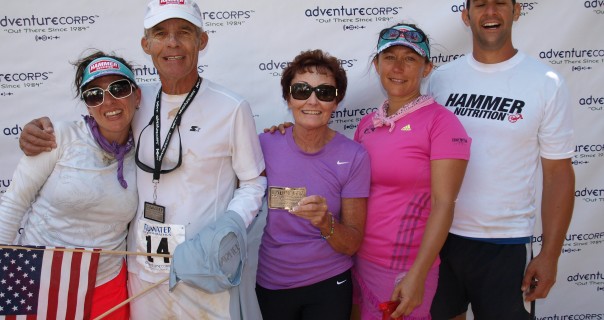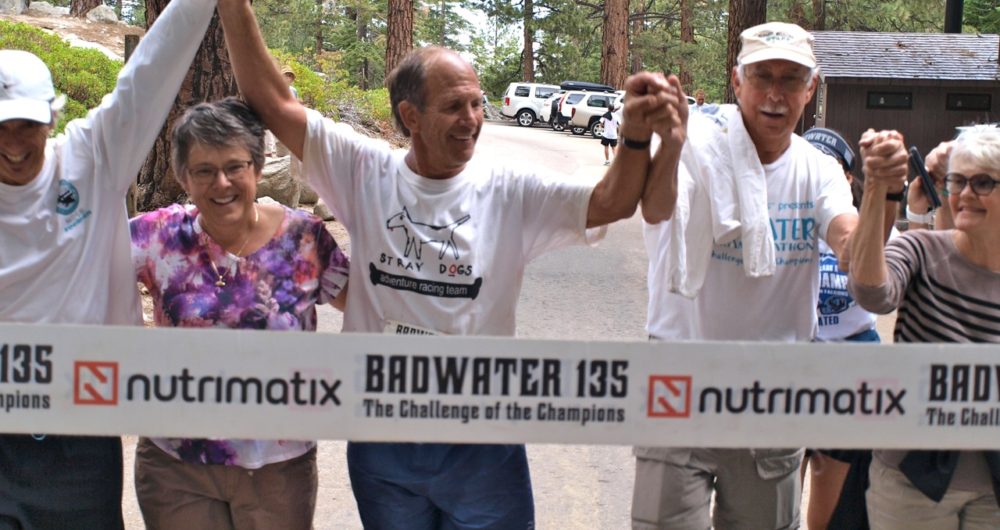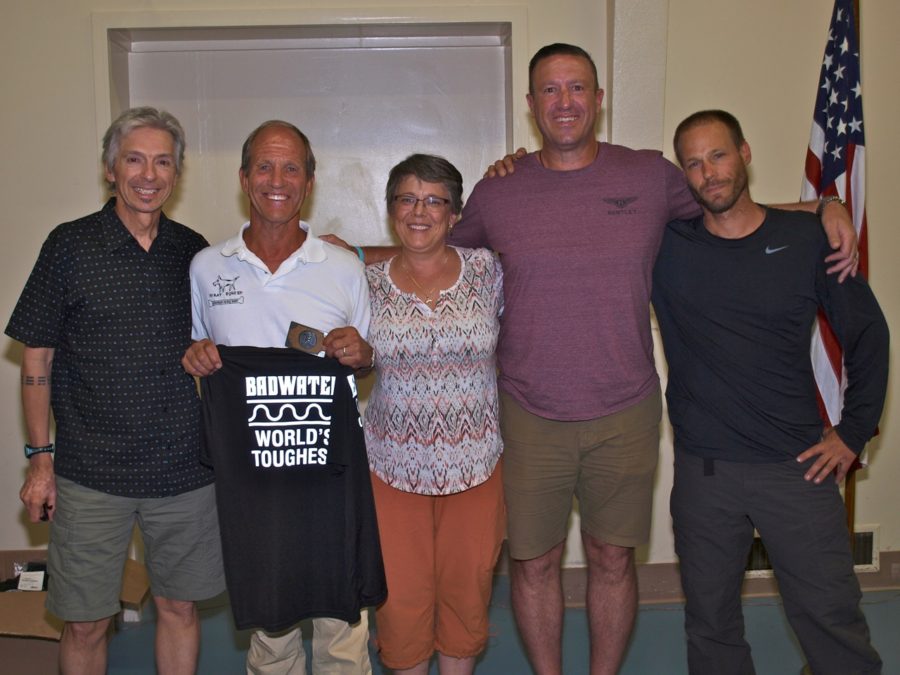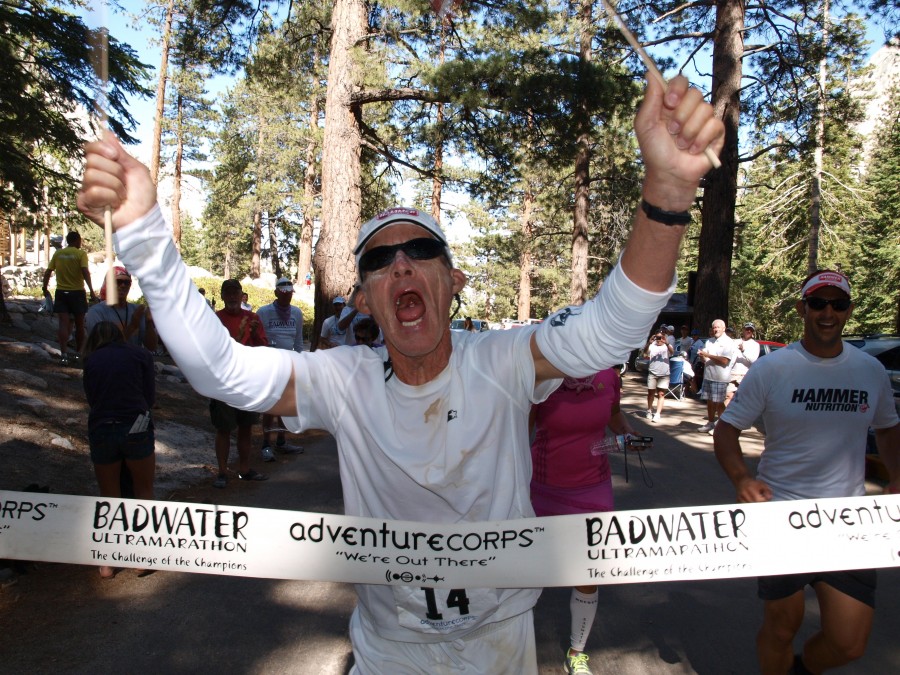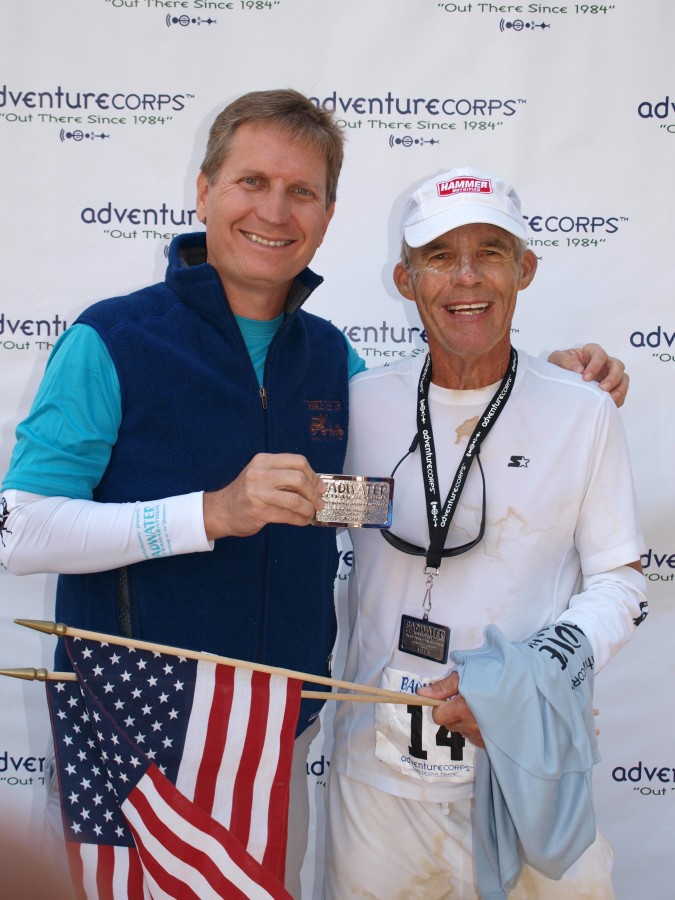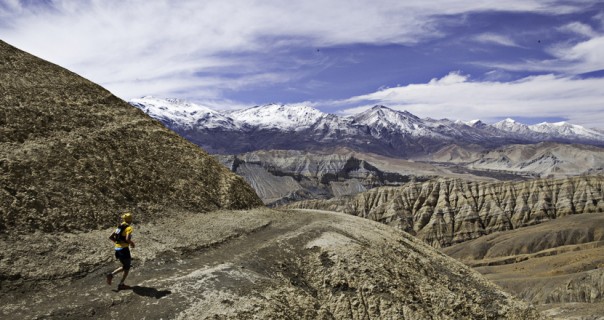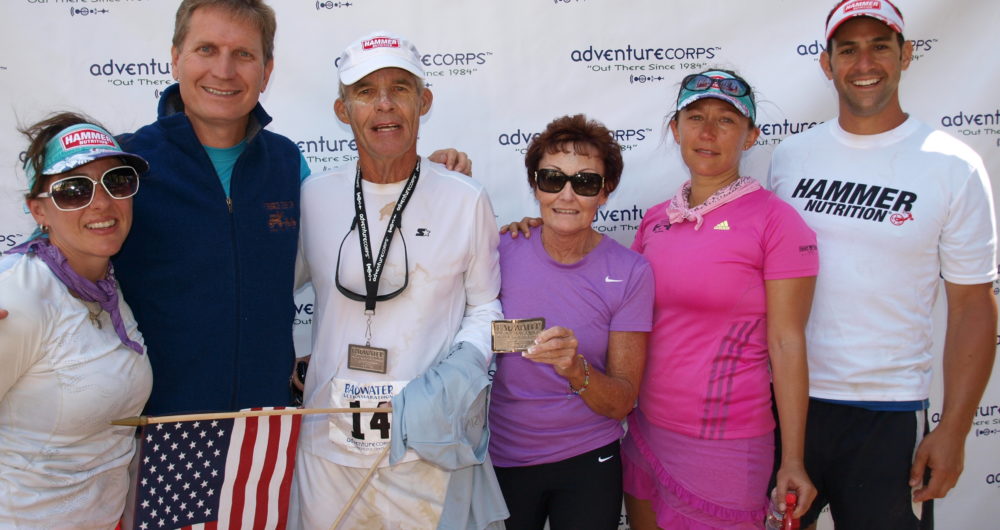By Arthur Webb
Fifteen-Time Finisher: 1998 through 2012, including a Personal Record and Age Group Record of 33:45:40 at age 70 at his final Badwater 135 in 2012. His stats.
I completed the 135-mile Badwater Ultramarathon fifteen times (includes one honorable mention). I had five solid years (under forty-hours), but more struggling years when I suffered too much too many times. After two poor consecutive races, I researched my problems, discovered flaws, retooled my training/racing plans, and had two successful almost painless performances, including a 33:45:40 personal and age group course record at age 70 in 2012.
Badwater 135 is daunting and unforgiving. No one escapes the inevitable attrition, and the haunting, excessive heat, fatigue, and weariness. No one. Everyone knows serious challenges will happen even during a “perfect” race. But if you make mistakes, then many major debilitating nasty problems will arise during a long miserable, relentless, grinding march to the finish line – or to a dreaded DNF (Did Not Finish).
However, various issues which impact progress and cause unplanned and excessive downtime can be avoided with proper preparation and execution.
How I Had Problems (you can, too). It is easy (Guaranteed):
The following are various mistakes I have made over the years. As a result, even partial recovery took hours, but it was too late, and I suffered along with my performance and race goals. It only takes one bad move from the list below to make your race very difficult, it not impossible to finish. Having two or more of these issues in one race will only make it worse, if not impossible to finish. I have done or experienced the following at Badwater 135 over the years:
- Overtrained: Too many miles. I started the race weary, tired, and vulnerable.
- Super hydrated (never, ever works): Too much water (clear urine) before an during the race (if maintained for prolonged hours) will degrade the processing system resulting in ugly issues: severe cramping, weakness, extreme fatigue, nausea, bloating weight gain, and a snail’s pace crappy miserable race. This was my number one nemesis that resulted in many poor performances and still happens to other runners at Badwater and at other ultra-races.
- Dehydration: Too little water (bright yellow or darker urine and tenting skin) caused severe cramping, nausea, diarrhea, and nasty downtime.
- Nutrition: Consumed too many calories that further bogged down my system causing stomach distress, nausea, lethargy, and unnecessary downtime.
- Electrolytes: Too much sodium led to excessive water retention and the super hydration problems above. Too little led to dehydration problems. Consuming a full spectrum electrolyte replacement is critical (not just salt / sodium.)
- Heat Issues: When clothing is too dry or not wet enough, core temperature rises and the body is much more vulnerable to excessive heat, exhaustion/stroke, lightheaded, listless, nauseating downtime or worse.
- Guessing Game: When I tried different foods and drinks (shot gunning) during the race (which had been not evaluated in training or in previous races), it was a huge mistake.
- Rest stops: Too many for too long in a chair, the van, or on the desert floor. There was no rhythm. It was either gear-up into the dreaded restart mode (again…ugh) or gear-down into time-consuming recovery/rest modes (more…ugh).
- Mountain goat: Ran up all the hills and/or exceeded race pace. A bad move.
- Restaurant cuisine: Dined at a local restaurant (one time). Different food and water caused stomach distress before and during the race. This is an overlooked issue; eat what you are accustomed to before and during the race.
How I avoided these mistakes (you can, too) and set personal and age group course records:
I did ALL of the following. Except for the normal wear and tear, I was comfortable the entire race with none of the nasty debilitating problems above.
- Training: From 120-miles a week to 90 for three months. Started fresher, full of energy. Long runs were 15 miles. Last three weeks were all power walking in the hills.
- Evaluated everything in training:
- Best advice (by far): “Less is Best” and “Top Ten Mistakes to Avoid” by fuel/ nutrition expert/guru Steve Born. I used his advice/formula, and it made a huge, gigantic difference. I believe these are Must Read articles.
- Fluids: My intent was to bypass the over/under hydration nasty debilitating toxic water issues. My goal was to remain close to my pre-race optimum running weight (when urine color was light to pale yellow). I would adjust fluid intake if my weight (on a small scale) drifted too much (a few pounds) either way, which was rare. I sipped (guzzling is a form of overloading) on 15 to 20 ounces of ice water (from a 16oz hand-held plastic squeeze bottle) an hour in the heat of the day and less in the cool of night. Let me reiterate: I never, ever taxed my system by overloading with too much water, nutrition, or sodium (Points 4, 5 and 6.) It worked. There were no nasty issues.
- Nutrition: I never consumed more than two hundred (all liquid) calories per hour (even less in the extreme heat). I sipped on a thick mix of Perpetuem chased with a splash of water and, at times, Ensure. My back-ups – which I never used – were past race-proven peanut butter, noodle/tomato soups and lean turkey slices (no bulky bread).
- Sodium: Two or three Endurolyte capsules an hour during heat of the day (less at night). If I felt even one slight muscle twinge I immediately took more.
- Breaks: One planned fifteen-minute leg massage at Father Crowley’s (mile 80) on a yoga mat on the ground and five minutes seeking relief in the parking lot bathroom. No comfortable chair (we did not even bring one) or cot was used. Otherwise, I kept moving.
- Sauna and steam room training: This required four intense weeks and one lighter week just before Badwater. Review my “Heat Training in the Sauna” article here at badwater.com (Note: Crew members should also heat train and follow much of the advice in this article.)
- Foot care: No tape. I coated socks and shoes with Gold Bond’s foot powder and never had even a hint of a blister, even when my feet were wet.
- Course Knowledge: This is priceless. Although I knew every step of the route, during the year, I studied the entire course on Google Earth. I memorized elevation changes, the dips and rises, and all the other nuances. During the race there were no surprises. I was more relaxed and comfortable knowing exactly where I was and what was just ahead.
- Mindset: I concentrated on my race pace and assorted goals. I did not let me mind drift or become distracted by external “noise.” I stayed intensely focused on a detailed estimated time of arrival at landmarks, mile markers, and checkpoints. I charted everything in advance, including hourly fluid and calorie intake, which made it easy for the crew to follow and execute.
- Pace: I trained and planned for a ten-minute per mile pace to Furnace Creek, then eleven-minute miles to Stovepipe Wells (an added minute to help avoid/sidestep degrading heat and thermal headwind issues in this area. (If I were much younger, or an elite runner and it was cooler, I would have been comfortable running a bit faster to Furnace Creek and Stovepipe Wells). Then I power-walked all the rolling hills and mountains, ran down the backsides of each mountain, and lightly jogged and power-walked all the flat sections.
- Pre-race food: I brought my own food and drink and ate my regular diet (there were no surprises). Race day was a small bowl of oatmeal three hours before the start.
- Stayed wet: During the heat of the day, my veteran crew (and pacer) kept me wet using a variety of handheld sprayers and sponges, and then at night only if I felt overheated. I carried a small spray bottle of chilly water used to keep my face cool.
- Clothing: Everything was light, white, and absorbable. I wore snug arm and leg compression sleeves and kept them wet during the heat. In the wind they were more aero-dynamic and dried out slower than the full coverage white suit that some runners wear. During intense heat I placed a small and large wet towel over my head and shoulders. I never overheated.
- Gloves and scoops: Crew used latex gloves and a scoop when handling food and ice. Crud and bacteria grow very quickly in the heat and cause immediate stomach distress.
- Stayed grounded and modest: The absolute highest priority at my last Badwater 135 race was to “shoot for the moon” and smash personal and course age group records. Yet, I told everyone my goals were more modest. Without the needless self-inflicted mind-torturing pressure from social or other media, I was always calm, relaxed, and performed as I knew I could – and not as others expected. It worked: Records fell.
That is what I did. It was not easy (it never is) and there was a host of annoying challenges along the way. But chasing personal goals and setting or breaking records is always extremely difficult. Yet it can be accomplished without piling on unnecessary suffering.
Except for a medical emergency, there are zero reasons for any starter not to finish. Be smart, patient, follow proven guidelines, do not trip on egos, and remember when you feel cruddy, sick, or as bad as you have ever felt (and, at times, you will), there are other runners who feel the same or worse but will continue, grind along, and stay the course because there is nothing more rewarding or life altering in the running world then crossing the finish line at Badwater.
Any questions contact me at Runerof100@aol.com or on Facebook.
Life is Grand!
– Arthur Webb (The Grinder)
15 x Badwater Finisher (1998-2012)
Age group (70-79) course record holder 33:45:40 (2012)
Badwater Hall of Fame (2013)
Ultrarunning Magazine: Age group performance of the year (2012)
“Do or do not. There is no try.” – Yoda, “Star Wars”
“Honor and respect the dignity of the Human Spirit. Always finish what you start.” – Arthur Webb


